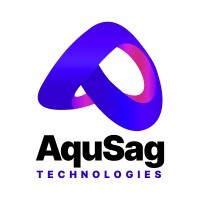Robotic Process Automation in 2025: Market Outlook and Innovations
 AquSag, LLC
AquSag, LLC
As we navigate through 2025, Robotic Process Automation (RPA) continues to be a cornerstone in the digital transformation journey of organizations worldwide. By automating repetitive, rule-based tasks, RPA enables businesses to enhance efficiency, reduce operational costs, and improve accuracy. The integration of RPA with emerging technologies is unlocking new potentials, making it an indispensable tool across various industries.
Key Trends Shaping RPA in 2025
1. Intelligent Automation: The Fusion of RPA with AI and ML
The convergence of RPA with Artificial Intelligence (AI) and Machine Learning (ML) is giving rise to Intelligent Automation (IA). This integration allows bots to handle complex tasks, make data-driven decisions, and adapt to changing environments. For instance, AI-powered RPA can process unstructured data, such as emails and documents, enabling automation of more sophisticated processes.
2. Cloud-Based RPA Solutions
The adoption of cloud-based RPA platforms is accelerating due to their scalability, flexibility, and cost-effectiveness. Cloud deployment facilitates easier integration with existing systems and supports remote workforce operations. Gartner predicts that over 20% of RPA initiatives will transition to the cloud by 2025.
3. Enhanced Governance and Compliance
As RPA becomes more pervasive, organizations are emphasizing robust governance frameworks to ensure compliance with regulatory standards and internal policies. The establishment of RPA Centers of Excellence (CoEs) is becoming common practice to oversee automation strategies, manage risks, and maintain consistency across deployments.
4. Improved Data Management
Effective data management is critical for the success of RPA initiatives. Organizations are investing in data governance and quality assurance to ensure that bots have access to accurate and consistent data. This focus enhances the reliability and efficiency of automated processes.
Innovations Driving RPA Forward
1. Cognitive Automation
Cognitive automation extends the capabilities of traditional RPA by incorporating AI technologies such as natural language processing and machine learning. This advancement enables bots to interpret unstructured data, understand context, and make informed decisions, thereby automating more complex tasks.
2. Real-Time Analytics and Monitoring
Modern RPA platforms are equipped with real-time analytics and monitoring tools that provide insights into bot performance and process efficiencies. These features allow organizations to identify bottlenecks, optimize workflows, and ensure continuous improvement in their automation strategies.
Strategic Implementation of RPA
1. Identifying Suitable Processes
Not all business processes are ideal candidates for automation. Organizations should assess tasks based on factors such as volume, complexity, and rule-based nature to determine their suitability for RPA. Starting with a small-scale proof-of-concept can help in evaluating the feasibility and benefits.
2. Stakeholder Engagement
Successful RPA implementation requires active involvement from all stakeholders, including IT, operations, and business units. Clear communication about the objectives, benefits, and changes associated with automation fosters collaboration and smooth adoption.
3. Continuous Learning and Adaptation
The dynamic nature of business environments necessitates that RPA strategies be flexible and adaptable. Regular reviews and updates to automation processes ensure alignment with organizational goals and responsiveness to evolving needs.
Challenges and Considerations
While RPA offers numerous advantages, organizations must address challenges such as integration complexities with legacy systems, change management, and potential job displacement. Developing comprehensive training programs and clear communication strategies can mitigate resistance and facilitate a smoother transition.
Conclusion: Embracing the Future with RPA
Robotic Process Automation is poised to play a pivotal role in shaping the future of work. By embracing the latest trends and innovations, organizations can harness the full potential of RPA to drive efficiency, agility, and competitive advantage. Strategic implementation, continuous improvement, and stakeholder engagement are key to realizing the transformative benefits of automation.
See more service:
Offshore Development Cost Calculator
Hire MERN Stack Developers in New York
Hire ReactJS Developers in New York
Hire Full Stack Developers in New York
Robotic Process Automation in 2025
Subscribe to my newsletter
Read articles from AquSag, LLC directly inside your inbox. Subscribe to the newsletter, and don't miss out.
Written by

AquSag, LLC
AquSag, LLC
At AquSag Technologies, we bridge the gap between complex digital challenges and real-world business success. Since 2010, we've been a trusted partner for companies of all sizes, crafting custom software solutions that deliver powerful results.